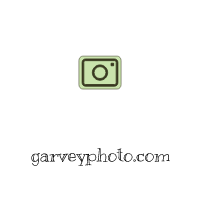The world of perfume is ephemeral, existing in the intangible realm of scent and memory. Yet, photography offers a way to translate this invisible art into a visual form, preserving the essence of fragrance through carefully curated compositions, lighting, and storytelling. In this exploration of stillness and aesthetics, we dive into the delicate interplay between perfume and photography, where every image whispers a silent but evocative story.
The Poetry of Perfume: Transforming Scent into Visuals
Perfume is more than just a fragrance—it is an emotional journey, a reflection of time and place. Capturing its presence in photography requires a nuanced approach that conveys its character without words.
The challenge lies in evoking scent through a static image. The rich warmth of an amber-based perfume, the crispness of a citrus blend, or the deep sensuality of oud—each demands a distinct visual language. Whether through textures, colors, or elements of motion, every aspect of the composition contributes to an evocative experience.
Emphasizing Mood Through Color and Contrast
Color psychology plays a crucial role in perfume photography. Each fragrance family carries inherent visual cues that can be leveraged for maximum impact:
- Floral and fresh perfumes often pair well with soft pastels, ethereal lighting, and delicate compositions to emphasize their airy and romantic nature.
- Woody and oriental scents benefit from deep shadows, warm hues like amber and gold, and textural elements such as leather or aged wood.
- Citrus and aquatic fragrances shine in high-key photography with bright whites, vibrant blues, and elements of water or glass.
Textural Storytelling: The Power of Props
Textures add an element of depth to perfume photography, suggesting the tactile qualities of the fragrance itself. Consider these approaches:
- Use silk, lace, or velvet to evoke softness and femininity for delicate florals.
- Introduce stone, wood, or metal to hint at strength and depth for darker, earthier scents.
- Capture mist, water droplets, or powder to create an ethereal, dreamlike quality.
By carefully selecting props and backgrounds, photographers can whisper the essence of a scent through sight alone.
The Language of Light: Shaping the Mood of Perfume Photography
Light is the ultimate storyteller in perfume photography. It shapes emotions, creates atmosphere, and dictates the overall perception of the image. Understanding how to manipulate light is essential for translating the intangible nature of scent into visual form.
Harnessing Natural vs. Artificial Light
Each type of light brings a unique character to perfume photography:
- Natural light exudes a soft, organic feel, ideal for capturing fresh, botanical, and light floral perfumes.
- Artificial light allows for precision, control, and drama, making it a powerful tool for luxurious and high-contrast imagery.
Golden hour lighting lends a romantic and nostalgic feel, perfect for evoking warm, rich scents. Meanwhile, moody chiaroscuro lighting can emphasize mystery and sensuality, aligning with deeper, more complex perfumes.
Shadows and Highlights: Crafting Depth
Strategic use of shadows and highlights can elevate perfume photography by adding a sense of depth and texture:
- Soft shadows create a sense of intimacy and mystery, perfect for niche and artisan perfumes.
- Sharp contrasts work well for bold, statement fragrances with a strong identity.
- High-key lighting evokes a clean, airy aesthetic, ideal for minimalist or fresh scents.
By carefully sculpting the light, photographers can paint a sensory experience that resonates beyond the visual realm.
Composition as an Art Form: Crafting a Story in Stillness
Great perfume photography is not just about capturing a bottle—it is about crafting a narrative. The placement of elements, negative space, and angles all contribute to the overall storytelling.
The Rule of Thirds vs. Centered Symmetry
The rule of thirds creates dynamic, balanced compositions that draw the viewer’s eye naturally across the frame. On the other hand, centered symmetry lends a sense of elegance, timelessness, and strength, often used in luxury branding.
Negative Space: Letting the Fragrance Breathe
Incorporating negative space gives the subject room to breathe, allowing the perfume bottle to take center stage while maintaining an air of minimalism and sophistication.
- A clutter-free background enhances the sense of exclusivity and refinement.
- Strategic use of blurred elements in the foreground can create a dreamy, soft-focus effect, reinforcing the ethereal nature of scent.
By treating composition as an art form, photographers can infuse perfume images with stillness, elegance, and profound storytelling potential.
The Influence of Texture: Enhancing Visual Perception
Textures create a tangible connection between scent and sight. They evoke the physical sensations associated with perfume notes, enhancing the depth of imagery.
Combining Textures for a Multisensory Effect
- Smooth, glossy surfaces reflect light and create a luxurious, polished look.
- Raw, natural materials like aged paper, fabric, or stone add authenticity and warmth.
- Reflective textures such as glass or water introduce a dynamic interplay of light and shadow.
Symbolism and Metaphors: Conveying Narrative Through Objects
A well-placed object can tell a silent story, creating an emotional connection between the viewer and the fragrance.
Choosing Symbolic Elements
- Flowers and petals suggest freshness and romance.
- Books or vintage items evoke nostalgia and timelessness.
- Feathers or flowing fabric convey lightness and ethereal beauty.
Editing and Post-Processing: Refining the Visual Narrative
Post-processing is the final touch that brings the artistic vision to life. Adjustments in color, contrast, and sharpness define the atmosphere and mood.
Key Editing Techniques
- Soft focus and glow effects enhance dreamlike qualities.
- Desaturation or sepia tones create a vintage or nostalgic feel.
- High contrast and clarity emphasize modern and bold compositions.
Questions and Answers
The biggest challenge is translating an invisible, sensory experience into a visual medium that effectively conveys the essence and character of the fragrance.
Light can dramatically alter the perception of a fragrance by enhancing its characteristics—soft lighting creates intimacy, while high-contrast lighting adds drama and luxury.
Texture provides depth and a tactile element to the image, helping to communicate the feel and personality of a fragrance through visual storytelling.

